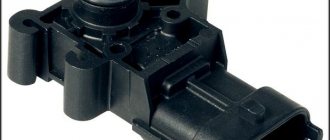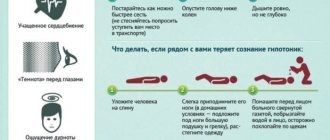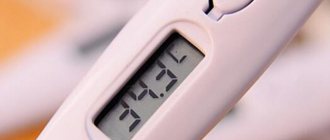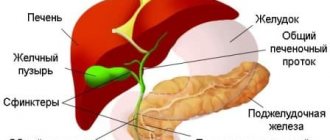Causes of low blood pressure
In old age, with vessels affected by atherosclerosis, low pressure can occur due to decreased tone of the smooth muscles of blood vessels and the heart muscle. During vagaries of weather and monthly hormonal fluctuations, the decrease in pressure can be significant.
Hypotension can be a consequence of nervous overstrain; it often develops as a consequence of infectious and other diseases, after viral and colds, flu, in the legs, as well as with insufficient or disordered nutrition, restrictive diets.
conclusions
Arterial hypotension is a rather dangerous condition that causes hypoxia of brain and heart tissue. It develops both as a result of individual congenital characteristics or lifestyle, and due to specific pathologies. Despite the fact that the condition is mostly reversible, the situation requires close attention due to possible complications.
Timely assistance with low blood pressure has a huge impact on the patient’s future prognosis. Therefore, if you have hypotension in your family, it is extremely important to know the rules of action in such cases.
Symptoms of low blood pressure
In addition to feeling unwell, hypotension brings with it more significant problems:
- Reduced pressure leads to insufficient blood supply to all organs and oxygen starvation of the brain, which is more sensitive to lack of oxygen.
- The result is weakness, lethargy and fatigue.
- Signs of low blood pressure also include dizziness, often motion sickness in transport, daytime drowsiness and disrupted night sleep, which only intensifies fatigue and weakness.
- One of the most unpleasant symptoms of hypotension is orthostatic hypotension. When standing up suddenly and changing body position, dizziness becomes stronger.
There are primary and secondary hypotension.
| Primary arterial hypotension | This is an independent disease in which hereditary predisposition and constitutional characteristics play an important role (usually young women of asthenic physique - slender, tall, emotional). |
| Secondary hypotension | It develops against the background of other diseases, such as hepatitis, peptic ulcers, anemia, allergic reactions, in case of poisoning, as a result of the side effects of certain drugs. In this case, hypotension is not considered as a disease, but as a symptom that goes away after the cause is eliminated. |
Is it so scary and does it need to be treated?
- In the generally accepted sense, hypotension is if the tonometer shows you numbers below 90\60 mmHg. But everyone has their own blood pressure standards and there is no need to “treat the numbers” if there are no complaints.
- Sometimes low blood pressure can still mean that the brain and other vital organs are suffering from a lack of blood flow. What symptoms may appear?
- Dizziness, feeling of unsteadiness
- Sudden loss of consciousness
- Foggy, blurred vision
- Changes in heart rate
- Nausea (no vomiting!)
- General weakness, difficulty concentrating
Hypotension of training
Another form of hypotension that occurs in athletes and simply trained people is training hypotension. But reduced vascular tone does not play a role here, it’s just that the body of such people is constantly under increased stress and therefore is accustomed to working in an “economical” mode.
The main complaints with hypotension are decreased performance, irritability, bad mood, memory may deteriorate, the person becomes distracted, and finds it difficult to concentrate. Emotional instability, increased sensitivity to bright light or loud speech predominates. Headaches and dizziness are common manifestations.
Headache is often associated with fluctuations in atmospheric pressure, large meals, and prolonged standing. The pain is usually localized in the occipital region or frontal region, feels like heaviness, and as the pain increases, the patient feels as if there is “pressure from the inside” on the skull. Sometimes you may experience a feeling of heaviness in the stomach, bitterness in the mouth, loss of appetite, nausea, belching, heartburn, flatulence, constipation - that is, almost all gastrointestinal disorders. In addition, hypotensive men may have reduced sexual potency, and women often experience menstrual irregularities. However, menstruation is often painful.
Hypotonic people often feel tired even after just waking up. They have difficulty waking up in the morning, even after a long sleep, feeling sleepy. Activity and performance return to normal only after 2-3 hours, weakening again during the day. The peak activity of hypotensive patients usually occurs in the late afternoon. With increased physical activity, people with hypotension may experience an increase in pulse and heart rate, and sometimes there are unpleasant sensations in the heart area and shortness of breath, which sometimes make a person suspect that they have angina pectoris or other serious illnesses.
Many hypotensive people constantly yawn, but not because they are tired, but because they “don’t have enough air,” which sometimes causes fainting or darkening of vision when suddenly moving from a horizontal to a vertical position. Sensitivity to weather changes is also a hallmark of people with low blood pressure. Most often, they do not tolerate heat very well, and even worse is the autumn or spring off-season with cloudy weather and low atmospheric pressure. Such people feel best on sunny and frosty winter days with high atmospheric pressure or on warm sunny days in late spring or early autumn. In addition, hypotensive patients are sensitive to weather changes and changes in climatic conditions.
Sex specificity
Hypotension affects both men and women equally. However, the strong half of humanity does not suffer from attacks of dizziness or fatigue, while these ailments were noted in a fifth of women suffering from hypotension.
Psychic background
You cannot put a hypotensive person with his frequent bouts of yawning and sighing on the same level as bored phlegmatic people. Hypotonic people may be full of energy, but not have the strength to realize it, and therefore react very painfully if someone draws attention to a decrease in their performance or makes fun of their always poor health, considering it a reason to take time off from work.
Classification of conditions accompanied by low blood pressure.
- Physiological hypotension is low blood pressure, which is a variant of the norm or is temporary.
- Hypotension as an individual variant of the norm, i.e., a feature of a given person that does not cause him discomfort.
- Hypotension due to increased training (in athletes).
- Hypotension is adaptive (in residents of highlands, tropics and subtropics).
- Pathological hypotension is a disease whose main manifestation is low blood pressure, a condition that requires diagnosis, mandatory treatment and observation.
- Neurocirculatory hypotension (primary, which is an independent disease, most often caused by impaired vascular tone and vascular function).
- Idiopathic orthostatic hypotension. An independent disease, the main symptom of which is a drop in pressure when changing body position.
- Symptomatic (secondary) hypotension:
- acute form (with shock, collapse, fainting, allergic reaction);
- chronic form;
- a form with severe orthostatic syndrome, that is, with severe dizziness when changing body position.
- Reduced blood pressure in diseases of the nervous system.
Old and reliable - help yourself!
- Sleep at an angle
Raise the head of the bed by placing a stand under its legs so that your head is approximately 20 cm higher than your feet. The blood circulation will now be forced to work against gravity to better supply the brain with blood. With this method, your blood pressure will not drop to lower limits at night and you will feel some relief when you get out of bed in the morning.
- Eat less, but more often!
Spread your food over 4-5 meals throughout the day! This will prevent you from dropping your blood pressure after eating a large meal. Also, keep your sugar intake constant to prevent hypotension from adding to your blood sugar levels.
- Rosemary
Rosemary is an old home remedy that helps keep low blood pressure from spiking. You can use it in various forms.
Wine: Use rosemary to make a strong white wine, as its bioactive compounds are best suited for fermentation. Pour 20 g of rosemary leaves into 750 ml of wine. Allow the wine to steep for 3 days before drinking a small glass regularly with lunch and dinner.
Bath Additive: Together with lavender, rosemary acts as a stimulant and at the same time relieves tension when used in a bath that has received the historical name of the “Austrian Queen Elizabeth” bath. This bath additive can be purchased ready-made at the pharmacy.
Tea: 1 tsp. with a top of finely chopped rosemary leaves, pour 1 cup of boiling water, leave for 10 minutes, then strain. Drink this tea 2-3 glasses a day.
- Water treatments
You will strengthen your heart and improve vascular tone with cold washes in the morning. With a wrung-out sponge, move from the back of your right hand to the shoulder, and then along the inside back to the hand to then repeat the movement up the outside of the rye. Then move to the shoulder, neck, chest and stomach, and then down to the thigh. Now repeat this procedure for your left hand.
Walking on water: Practice this in the evening. Pour cold water into the bath no more than mid-calf and walk for 5 minutes in a “stork gait”, completely extending your legs out of the water. After the procedure, put on warm socks.
- Acupressure
To eliminate low blood pressure, you can try massaging the “Sea of Energy” point, located approximately 5-10 mm below the navel. Make circular movements with your thumb, middle and ring fingers, rhythmically changing the pressure, but without causing pain. The duration of the massage is 1 minute. Repeat this massage several times a day, especially when you feel tired.
- Aromatherapy
Low blood pressure cannot be completely cured, but when fatigue and loss of performance occur, certain aromatic substances have a very beneficial effect. Massages or baths with camphor, peppermint, sage, thyme and hyssop have a stimulating effect. Rosemary aromatic oil can be used for both high and low blood pressure.
You will need 15-20 drops of one of the above aromatic oils or a mixture of them to taste. Mix them with 1-2 tbsp. l. cream, milk, liquid honey or neutral juice. You can also use vegetable oil. Pour this mixture into a bathtub with running water.
Massage oil: use 50 ml of jojoba oil or almond oil as a base. Add 15-20 drops of aromatic oil to taste and shake this mixture well.
Aroma lamp: You can try using an aroma lamp at work or at home. Add 5-8 drops of rosemary to a cup of aroma lamp water. You will be surprised how the aroma that spreads into the room will bring fresh energy. The active substances of the aromatic oil will penetrate the respiratory tract and skin pores into the body and have a beneficial effect on the entire body.
Diagnosis and treatment
Considering the fact that hypotension can serve as a symptom of many diseases or be an independent pathology, an examination is necessary to exclude diseases that could lead to a decrease in pressure. In this regard, there is no strictly defined list of examinations. To understand why the patient has low blood pressure, a diagnostic plan is drawn up and prescribed strictly individually, taking into account the patient’s history and previous diseases.
When establishing the cause of the disease, therapy usually uses complex methods aimed at restoring and strengthening the vascular wall and treating the underlying disease, if required, strengthening the autonomic nervous system and immune processes. General stimulants are prescribed, for example, drugs containing caffeine.
Many herbal preparations, so-called “folk remedies,” also have a tonic effect, which can also help with low blood pressure (hypotension). Self-administration of such drugs, however, requires great caution, because the same substances can have different effects on different people. Sometimes a paradoxical reaction and deterioration of the patient's condition may occur.
You should not self-medicate for hypotension! Only a doctor can prescribe the drugs necessary for a particular patient after he has examined the patient and established the cause of hypotension and the characteristics of its course.
Recommendations and prevention
Doctors recommend following simple rules so that low blood pressure does not worsen life or affect its quality.
Preventive recommendations include following these rules:
- Regularly measure blood pressure, monitor its fluctuations, and apply treatment measures in a timely manner.
- Visit your cardiologist regularly.
- Lead a healthy and active lifestyle.
- Take vitamin complexes and healthy foods.
- Maintain an 8-hour sleep pattern, work and rest, day and night.
- Minimize or completely avoid stress.
- Introduce daily physical activity into your daily routine, do hardening, and think positively.
Blood pressure measurement
Modern devices for measuring pressure are either mechanical or electronic. When using a mechanical pressure gauge, a phonendoscope is required, with which you can hear the beginning and end of the stages of systole and diastole.
Blood pressure is measured while sitting or lying down. In order for the readings to be accurate, the pressure gauge should be at the level of the person’s heart, and the cuff should be approximately 2 cm above the elbow. Air is pumped into the cuff, causing compression of the blood vessels and the disappearance of the pulse, and then slowly released. The point at which clearly visible pulse beats appeared is noted as an indicator of upper pressure, and the point at which these beats disappear is noted as an indicator of lower pressure. An electronic pressure gauge works without a phonendoscope; in this case, indicators of upper and lower pressure, as well as pulse, are recorded automatically and displayed on the screen.
The availability of modern devices for measuring blood pressure and the ease of their operation allow everyone to regularly monitor this important vital sign of their own body and take timely measures if such a need arises.
Make an appointment Do not self-medicate. Contact our specialists who will correctly diagnose and prescribe treatment.
How to increase blood pressure urgently
Source: CC0 Public Domain
If the pressure has dropped sharply, and there are no medications at hand, it can be quickly increased using the following methods:
- eat something salty, for example, a pickled cucumber, a tomato or a slice of well-salted lard;
- drink a lot of plain clean water;
- Brew strong coffee and drink in small sips.
In case of repeated attacks, you should consult a general practitioner or cardiologist and undergo a comprehensive examination.
Increased blood pressure without medication
A contrast shower will help raise your blood pressure.
Photo: andranik.h90 / freepik.com Some people do not trust traditional medicine and prefer to be treated with folk remedies. If you feel unwell due to a sudden drop in blood pressure, for example, due to a sudden change in weather or a long flight, you can try to raise it without medication:
- take a contrast shower;
- eat a few slices of dark chocolate;
- drink a couple of cups of strong natural coffee - yes, coffee can really help quickly.
However, if hypotension is associated with existing diseases, it is better to avoid such express methods so as not to harm the body.
Lower and upper blood pressure
In a healthy person, the heart muscle contracts 60 to 80 times per minute at rest. With each contraction, the heart pumps another portion of blood into the arteries. Accordingly, the maximum blood pressure on the walls of blood vessels is recorded at the moment of contraction of the heart muscle. Between contractions, the heart muscle relaxes. At the time of such rest, blood pressure is at its lowest.
The highest reading is called systolic or upper pressure. The name comes from the word “systole” - the stage of contraction. The lowest pressure reading is called diastolic (from the word “diastole” - the stage of relaxation). Systole and diastole are stages of the normal cardiac cycle.
Pressure readings are traditionally recorded in millimeters of mercury. When measuring, the upper pressure indicator is always indicated first, and the lower pressure indicator second.
Medicines for high blood pressure
Medicines to increase blood pressure are prescribed in emergency cases or for prolonged hypotension. The choice of drug is based on the nature of the disease and examination results.
The main groups of drugs for lowering blood pressure:
- Caffeine-based drugs are used to urgently increase blood pressure in critical situations. They are administered intramuscularly or intravenously by emergency or hospital doctors. Caffeine is contraindicated in cases of cardiac arrhythmias and heart failure.
- Analeptics that affect the respiratory and vasomotor centers of the brain.
- Glucocorticoids - increase blood pressure by constricting blood vessels; they are used quite rarely due to the large number of side effects.
- Adrenergic agonists that affect the muscles of the heart, blood vessels and some other drugs.
Any drugs to increase blood pressure are used only as prescribed by a doctor and strictly in the dosage prescribed by him.
How to improve blood pressure permanently
Regular physical activity is needed to maintain normal blood pressure.
Photo: tertyshnyk_oksana / freepik.com To consolidate success, you can make changes to your lifestyle and increase your blood pressure for a long time. For example, you can:
- Switch to a diet with a high salt content - but only a little, it is important not to go beyond the adequate recommendations;
- Reduce consumption of alcoholic beverages;
- In hot weather, drink more fluids;
- Ask the doctor to evaluate the medications the person is prescribed to take. Perhaps some of them have hypotension as a side effect;
- Play sports - at least 150 minutes of physical activity per week;
- Reduce the time you spend standing still.
If necessary, your doctor may recommend elastic compression stockings that cover the calf and thigh. They will help limit blood flow to your legs—and keep more blood in your upper body.
Sources
- A.V. Barsukov, A.M. Karimova, Yu.Sh. Khalimov, D.V. Glukhovskaya The problem of arterial hypotension in young patients in clinical practice // Bulletin of the Russian Military Medical Academy. – 2021. – No. 3 (55)
- ROBERT STIGLER. Normaler und hoher Blutdruck und kardiavaskuläre Mortalität bei verschiedenen Völkern [Electronic resource] // Springer-Verlag Berlin Heidelberg GmbH, 1964.
- Michel Burnier, Edward Pivin, Fatma Megdiche. Neue Ziele für die Behandlung von Bluthochdruck? [Electronic resource] // Swiss Medical Forum ‒ Schweizerisches Medizin-Forum, March 2021.
- PROF. LUCA RIDOLFI, DOTT.ING. ANDREA GUALA. Fluidodinamica del sistema arterioso durante l'infanzia e l'adolescenza [Electronic resource] // Emodinamica del sistema arterioso, 2021.
- Keith Sturgess. Management and treatment of hypotension and hypertension [Electronic resource] // Vet Times, 2021.
Diagnostic measures
To diagnose the disease, it is important not only to establish the fact of hypotension using a tonometer, but also to find out the reasons for its development. Diagnosis of arterial hypotension is always complex. Typically it includes:
- daily blood pressure monitoring - the patient’s blood pressure is measured after a certain period of time and its fluctuations are determined;
- blood sampling for biochemical research in the laboratory - diseases of the heart and blood vessels, endocrine system, etc. are confirmed or excluded;
- electrocardiogram - performed both at rest and, for comparison, with loads.
Diagnosis begins with questioning the patient and examining him with a cardiologist. In some cases, for a full diagnosis, additional consultation with an ophthalmologist, nephrologist, endocrinologist and neurologist may be necessary.







